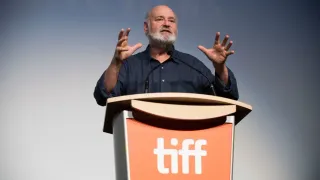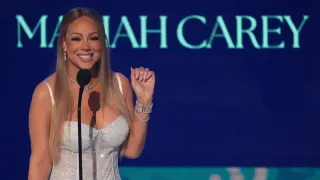December 18, 2021
Netherlands 'Going into Lockdown Again' to Curb Omicron
Danica Kirka READ TIME: 5 MIN.
The Dutch government says it is imposing a tough nationwide lockdown in an attempt to rein in sharply rising levels of infections with the omicron coronavirus mutation.
Schools, universities, and all non-essential stores, bars and restaurants will be closed until Jan. 14 starting Sunday, caretaker Prime Minister Mark Rutte said.
"The Netherlands is going into lockdown again from tomorrow," Rutte said Saturday. He said the move was "unavoidable because of the fifth wave caused by the omicron variant that is bearing down on us."
Rutte says the government's new order builds on an existing partial lockdown already in force that requires bars, restaurants and other public gathering places such as cinemas and theaters to close at 5 p.m.
THIS IS A BREAKING NEWS UPDATE. AP's earlier story follows below.
LONDON – Nations across Europe are moving to reimpose tougher measures to stem a new wave of COVID-19 infections spurred by the highly transmissible omicron variant, triggering calls for protests from Paris to Barcelona.
As case numbers escalated, alarmed ministers in France, Cyprus and Austria tightened travel restrictions. Paris canceled its New Year's Eve fireworks. Denmark closed theaters, concert halls, amusement parks and museums. Ireland imposed an 8 p.m. curfew on pubs and bars and limited attendance at indoor and outdoor events.
London Mayor Sadiq Khan underscored the official concern about the climbing cases and their potential to overwhelm the health care system by declaring a major incident Saturday, a move that allows local councils in Britain's capital to coordinate work more closely with emergency services.
Irish Prime Minister Micheál Martin captured the sense of the continent in an address to the nation, saying the new restrictions were needed to protect lives and livelihoods from the resurgent virus.
"None of this is easy," Martin said Friday night. "We are all exhausted with COVID and the restrictions it requires. The twists and turns, the disappointments and the frustrations take a heavy toll on everyone. But it is the reality that we are dealing with."
The World Health Organization reported Saturday that the omicron variant of the coronavirus has been detected in 89 countries, and COVID-19 cases involving the variant are doubling every 1.5 to 3 days in places with community transmission and not just infections acquired abroad.
Major questions about omicron remain unanswered, including how effective existing COVID-19 vaccines are against it and whether the variant produces severe illness in many infected individuals, WHO noted.
Yet omicron's "substantial growth advantage" over the delta variant means it is likely to soon overtake delta as the dominant form of the virus in countries where the new variant is spreading locally, the U.N. health agency said.
Government ministers in the Netherlands met Saturday to discuss advice from a panel of experts that recommended expanding an existing partial lockdown, which officials said had led to a recent decline in infections.
Dutch Health Minister Hugo de Jonge didn't say what measures the government might impose as he headed into the meeting. "There are very serious concerns," he told reporters in The Hague. "That's why we're meeting on Saturday to see what we need to do."
Fearing it could be their last chance to shop before Christmas, shoppers flocked into the shopping areas of Dutch cities.
Rotterdam municipality tweeted that it was "too busy in the center" of the port city and told people: "Don't come to the city." Amsterdam also warned that the city's main shopping street was busy and urged people to stick to coronavirus rules.
In the U.K., where confirmed daily cases soared to record numbers this week, the government has reimposed a requirement for masks to be worn indoors and ordered people to show proof of vaccination or a recent negative coronavirus test when going to nightclubs and large events.
But the moves are causing anger.
Critics of British Prime Minister Boris Johnson's latest coronavirus restrictions flooded Oxford Street, a popular London shopping area, on Saturday. The maskless protesters blew whistles, yelled "Freedom!" and told passersby to remove their face coverings.
Hundreds of people blocked traffic as they marched with signs bearing slogans such as "Vaccine passports kill our freedoms" and "Don't comply." Other signs had the faces of Johnson or U.K. Health Secretary Sajid Javid and read, "Give them the boot."
Scientists are warning the British government it needs to go further to prevent hospitals from being overwhelmed.
Leaked minutes from the Scientific Advisory Group for Emergencies suggested a ban on indoor mixing and hospitality, the BBC reported.
Britain and other nations are also accelerating the pace of booster shots after early data showed that two doses of vaccine were less effective against the omicron variant. Shopping centers, cathedrals and soccer stadiums in Britain have been converted into mass vaccination centers.
During a visit to a mass vaccination pop-up clinic at London soccer team Chelsea's stadium on Saturday, Khan said the running of public services could be impeded by the rapidly spreading variant.
"The big issue we have is the number of Londoners who have this virus and that's leading to big issues in relation to staff absences and the ability of our public services to run at the optimum levels,'' he told the BBC. "I'm incredibly worried about staff absences in the (National Health Service), in the fire brigade, in the police service, in our councils across London.''
Omicron is now the dominant coronavirus variant in London and efforts were stepped up to reach people who haven't yet been vaccinated or boosted.
"I want to make a direct appeal to the more than 1 million Londoners who are yet to come forward for any COVID-19 vaccinations – it's never too late to get your first or second dose,'' the mayor said. "It will help to protect you, your loved ones and our NHS."
In France, the government announced that it will start giving the vaccine to children in the 5 to 11 age group beginning Wednesday. Prime Minister Jean Castex said Friday that with the omicron variant spreading like "lightning," the government proposed requiring proof of vaccination for those entering restaurants, cafes and other public establishments. The pending measure requires parliamentary approval.
Demonstrations were planned in Paris to oppose the vaccine pass proposal and ongoing government restrictions.
Thousands of opponents of vaccine requirements and mask mandates protested Saturday in Hamburg, Berlin, Düsseldorf and other German cities. In Austria, local media reported the crowds swelled to tens of thousands.
___
Courtney Bonnell in London; Emily Schultheis in Vienna; Mike Corder in Amsterdam; and Thomas Adamson in Paris, contributed to this report.
___
Follow AP's pandemic coverage at https://apnews.com/hub/coronavirus-pandemic






